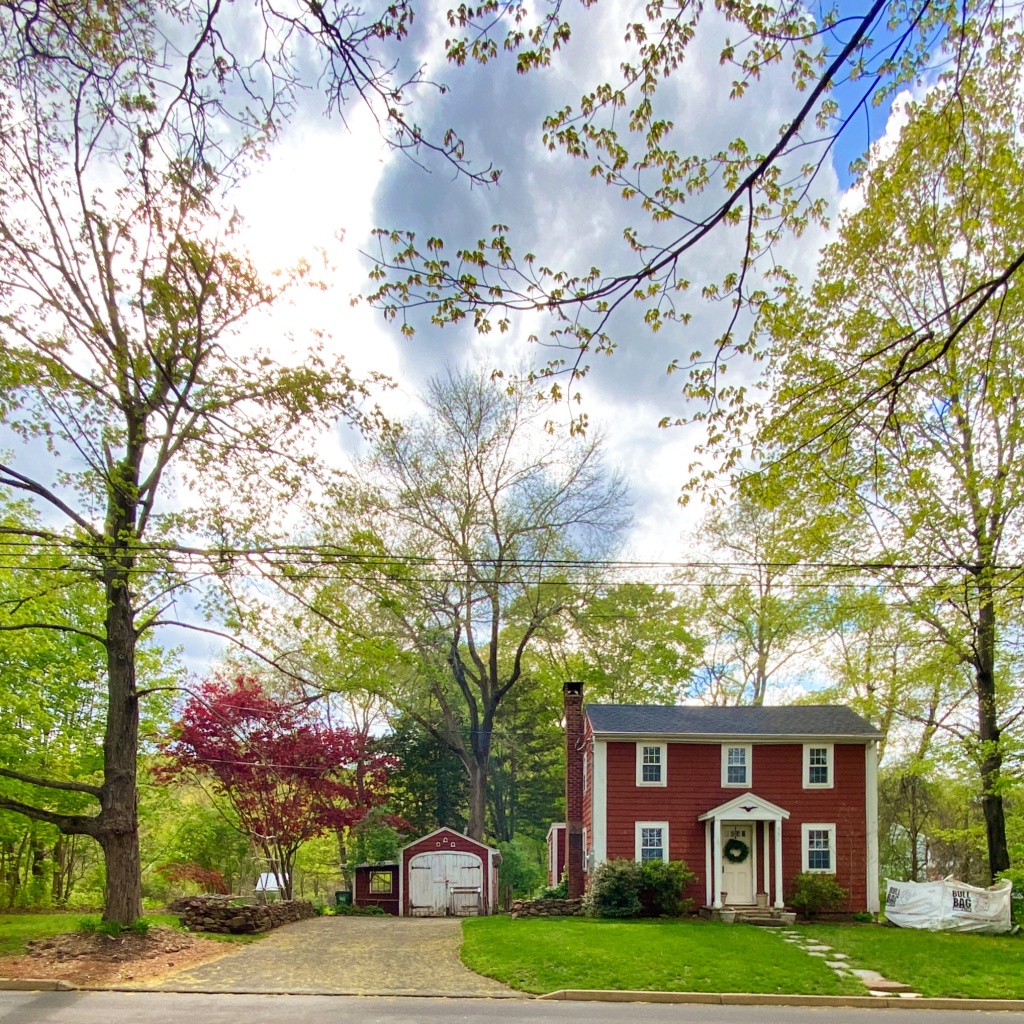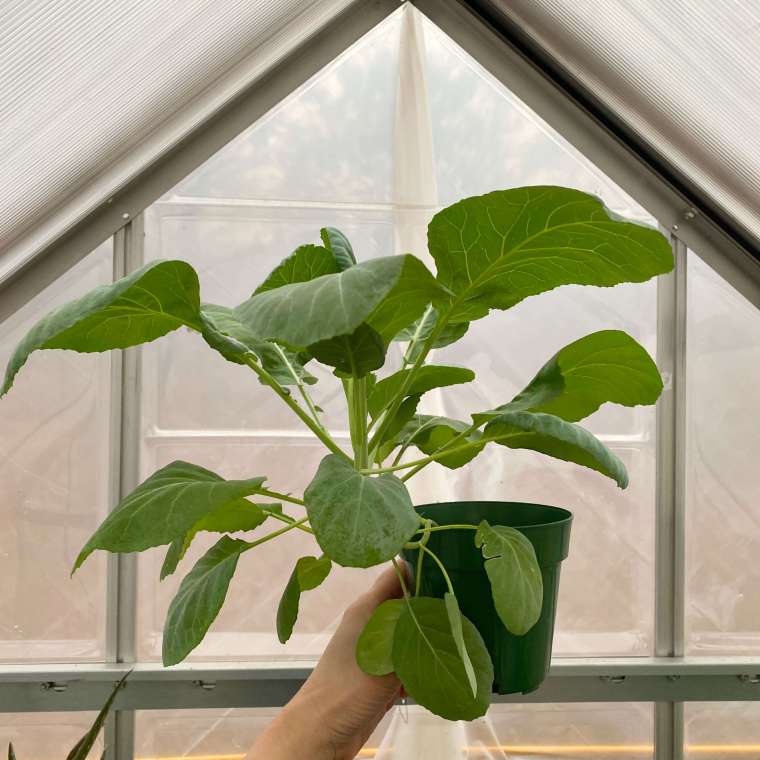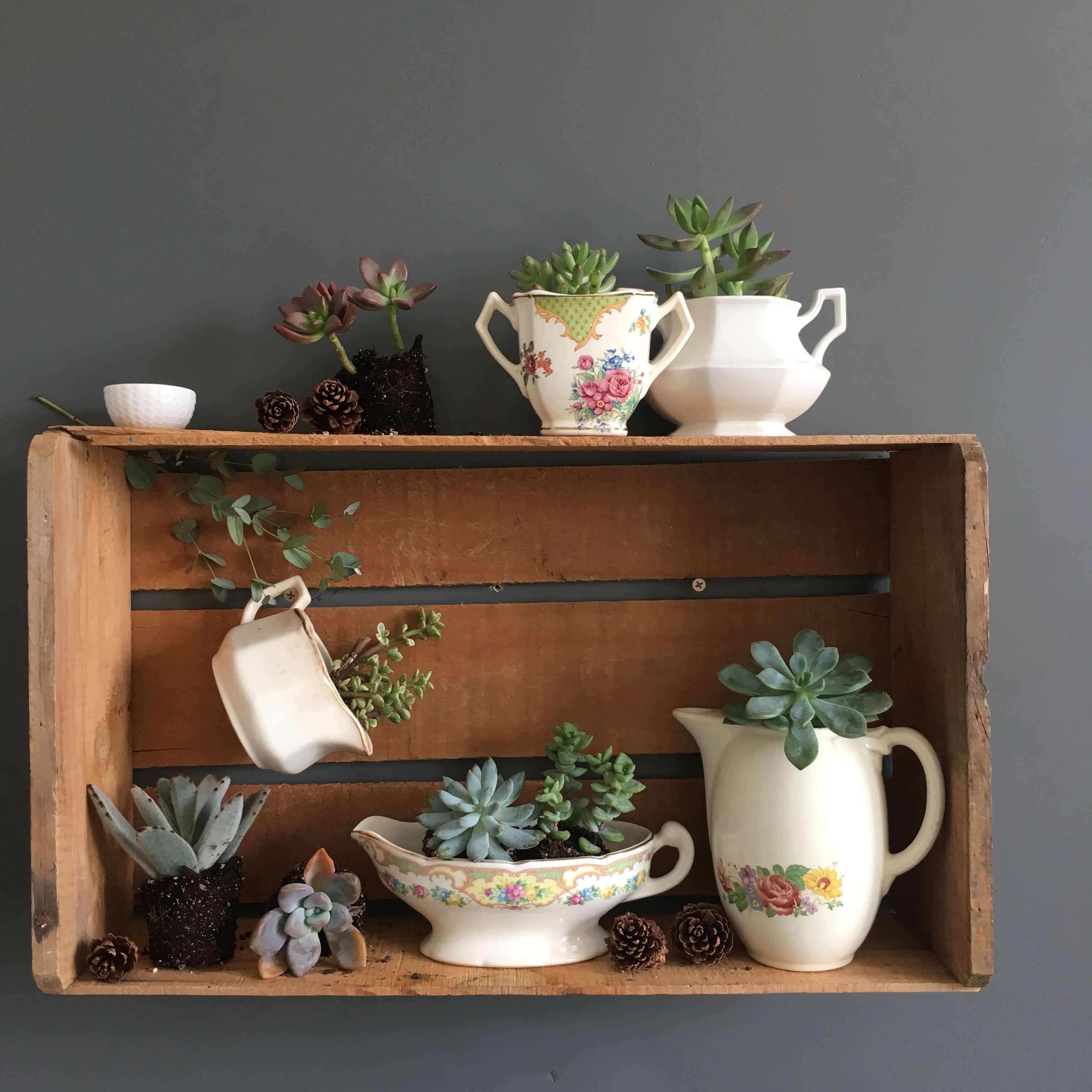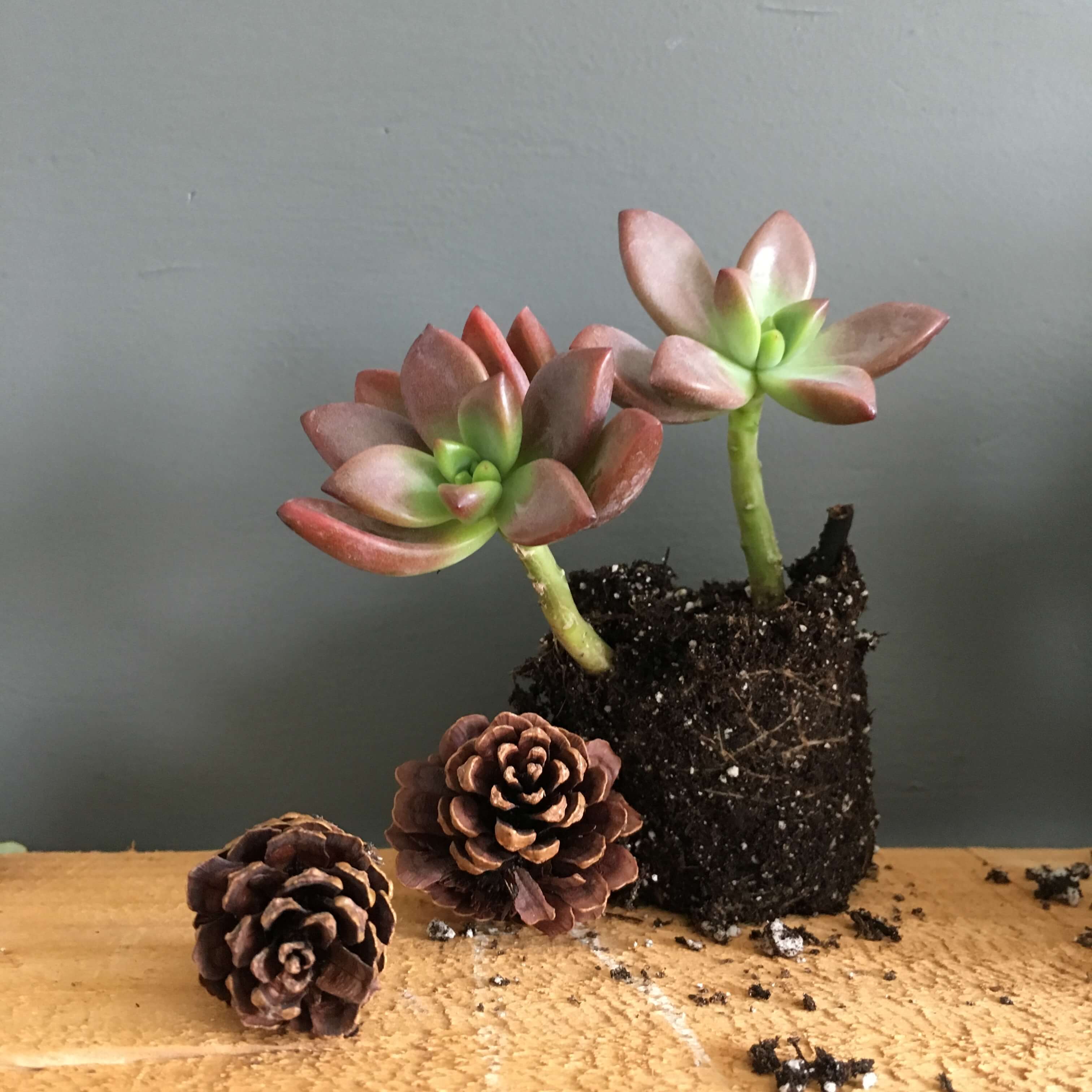
{A Fragrant Year is an ongoing series shared throughout 2024 highlighting twelve fragrant plants, trees, flowers, shrubs and herbs added to the New England garden landscape, month by month, surrounding a house built in 1750. This series was inspired by the 1967 garden book, The Fragrant Year by Helen Van Pelt Wilson and Leonie Bell. If you are new to the blog, catch up with our first introductory post here.}
March blew into the kitchen in a flurry of raindrops, wind chills and the occasional threat of one more snowstorm. My favorite local nursery didn’t open for the season until mid-month, and as we are quickly learning, not much happens in New England on any sort of instant gardening level until the beginning of April. So this month, there will be two fragrant garden posts – one for March and then the other for April so that we can keep on track for a full year of fragrant gardening month by month.

When our local garden nursery did open its doors for the season, a much-anticipated event in my world, a sea of pastel colors unfolded rack by rack, tray by tray, row by row. Aside from all that lovely Easter egg-shaded splendor, the thing that immediately greeted everyone at the door was the unexpected scent of warm honeycomb. This was not a fragrance brought on by bees zipping in and out of the flower pallets nor by close-by hives where they like to linger. This was the scent of violas, our featured fragrant flower for the month of March and part of April.

Dainty and delicate, a smaller but more robust version of their bigger blossomed offspring, the pansies, violas have always been a flower I passed by in previous years because of their size and what I thought was a sort of a hum-drum, everyday ordinariness. But when seeing them altogether, in masses of bright purples, oranges, lavender blues, crimson reds, lemon yellows and perfect whites they were a bright sight for winter-weary eyes. I also never realized what an incredible fragrance they carry, but after reading all about them in Helen and Leonie’s book, The Fragrant Year they were definitely worth a second look. “The fragrance reaches out to snare you into stopping, marveling, ” wrote Helen and Leonie back in 1967. Indeed.

Technically considered an herb, violas are the parent plant of pansies, and though while smaller in size, will put out more buds and blooms in the late winter/early spring months than pansies. They are also a heartier plant that is able to withstand freezing temperatures and snowy landscapes, an ideal match for our New England climate, but also for other areas around the country that experience cool weather temperatures during springtime too. Ideal temperatures for growing these ladies are 40 degrees at night and 60-70 degrees during the day.

“The end of the growing season is the beginning for violas since short cool days are needed to trigger bud formation,” write Helen and Leonie. That means that when you plant violas, you actually encourage two growing seasons from them each year – one in fall and one in spring. And since they come in an array of colors beyond the most traditional (lavender), they can complement most garden palettes. Here are just a few color choices within the viola family…



First discovered in the Pyrenees, violas have been part of kitchen gardens for centuries. Used in making tea, wine, and liqueurs, they are also members of the edible flowers club. Not only do they add an interesting slightly sweet flavor to salads, cheese, butter and desserts but they also add beauty and color to the plate as well. And their contributions to everyday life just don’t stop at the kitchen either. Throughout history, violas have also been used in making perfume and medicinal salves since they contain both anti-inflammatory and anti-bacterial properties. These flowers might be mini in size but they certainly are mighty when it comes to usefulness.

I came home with a variety called Penny Lane (a hybrid of the Viola cornuta family) which comes in a mix of shades ranging from deep red to white and yellow. The more you plant, the greater the scent of course, but it’s amazing to think that even one small plant can carry what seems like an entire perfume factory in just a few petals.


We have French botanist, Rene Louiche Desfontaines (1750-1833) to thank for describing and naming this variety of viola. He did this in the late 1700s, which makes them a very age-appropriate choice for 1750 House. That was an unexpected surprise learned after I brought the Penny Lanes home, but now that they are firmly nestled under a crab apple tree, tucked in between woodland border beds of daylilies and foxglove starts from last year (see more of those below) they seem quite fitting.

My eight plants might not be much of an exuberant site at the moment, but one of the fun things about violas is their ability to self-seed on their own. In theory, fingers crossed, in the next couple of years, we’ll see violas popping up all over the woodland areas surrounding this small bed that will add color, interest and most importantly, fragrance to the early spring and late autumn landscape. We’ll catch up with them again in fall to see how this set is doing and to see how much they’ve grown over the course of the next seven months.


Meanwhile, here are some other sights and updates from the greenhouse diaries of March and part of April 2024…

New pathways around the greenhouse and the yard are underway. We’ve lined each one with a wattle border using invasive vines cut down from the woodlands that were taking over some of the tree canopies. Landscaping bushes, a short fence around the greenhouse, and more planting beds are coming soon to that area.

Do you remember the first planting of the foxglove seedlings from last year? This is them now after being planted in the garden last May. The one thing that is difficult to find online these days is a visual example of what foxglove, started from seed, should look like year one just as a green plant before it flowers in year two. There are plenty of photographs that show foxglove fully flowered out in year two but none taht I could find at least of how the plants should look in their first year. I’m so happy to share these photos because hopefully it will become a helpful reference for other gardeners too. As I discovered, year one foxglove plants (leaves only) are beautiful.

In the first year, they grow to about the size of a large head of lettuce and stay green year-round including during the winter – even in below-freezing temperatures and snow. We planted ours on the edge of the woods in an area that we will continue adding to year after year, so that eventually the woodlands bordering the edge of the yard will be lush and green and full of foxglove. Much prettier than looking at bare patches of dirt.

The collard greens and the peas have been planted in their springtime beds…

And the brocolli is now 12″ inches tall. The beets greens are growing.The kale is just right at 6″ inches now and Liz has a lemon with triplets on the way.




An industrious pair of black-capped chickadees pecked their way through a post on the back porch of 1750 House. What’s particularly fascinating is that this post is not made of wood but of a plastic composite that holds up one corner of the 1990s addition. The post will eventually get replaced with real wood, but for now, the chickadees seem more than happy to call it home. And we are more than happy to have these cute little songbirds as neighbors. Not only do they sing their way through the day but they also feast on a host of insects that can be problematic in the garden including the dreaded scale bug, which we had troubles with last year.

And just in time for publication of this post, something arrived in the mail…

Could it be the witch hazel from February’s Fragrant Garden post?! Stay tuned for the second half of April’s Fragrant Garden series coming soon. In the meantime, cheers to the cheerful viola. Happy Spring!






































































































































































































